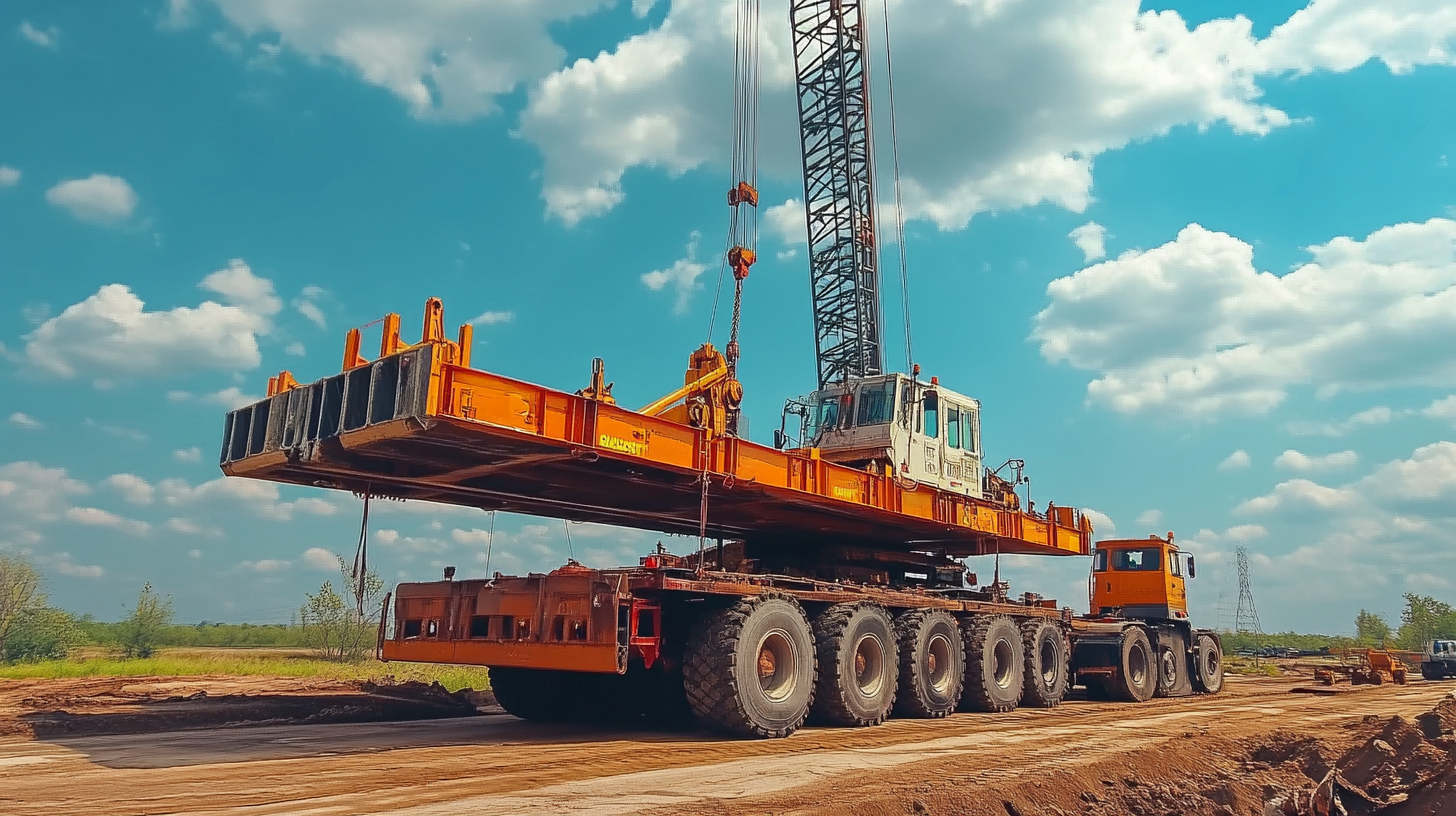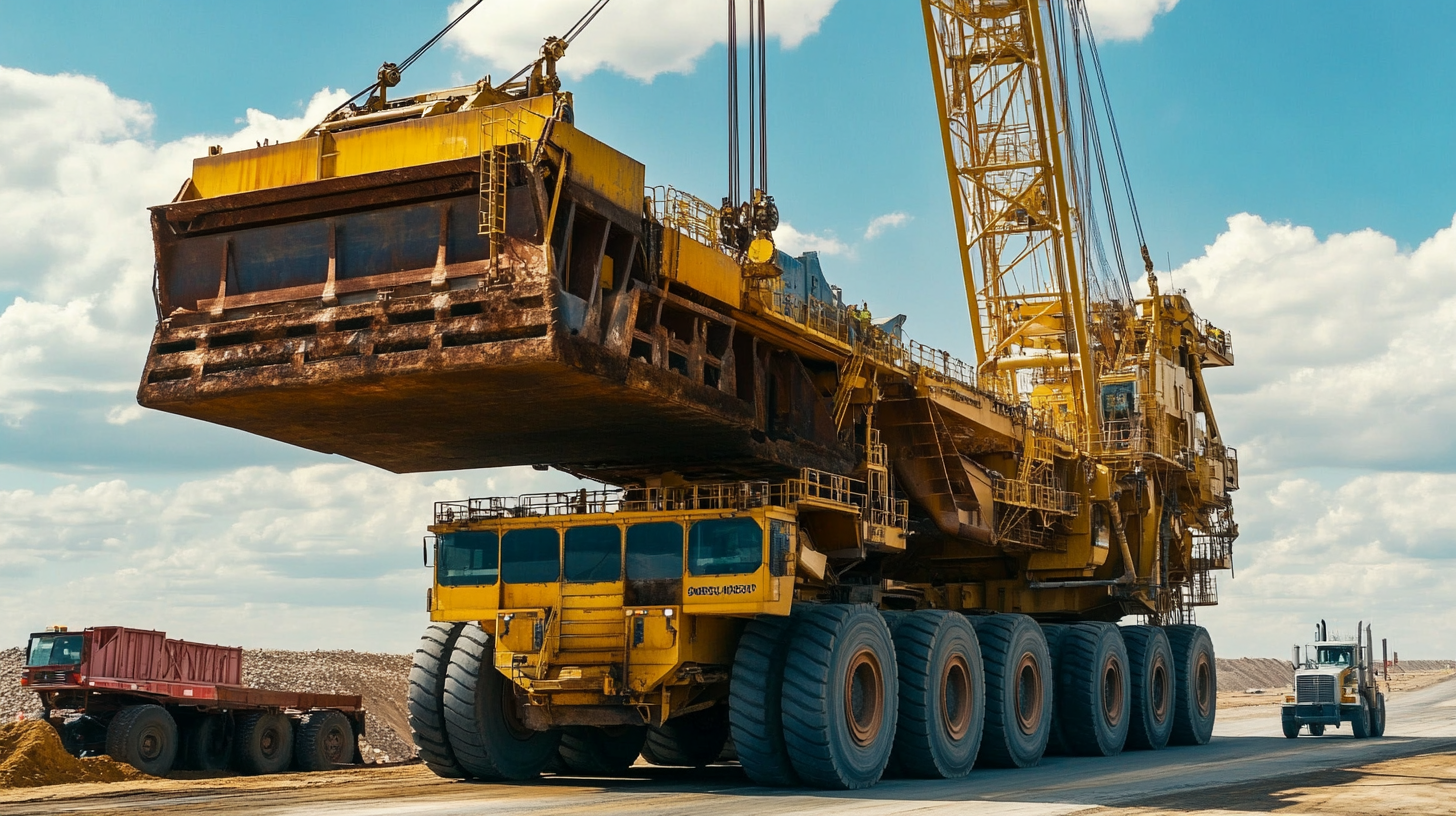Leave Your Message
- Phone
- E-mail
- Whatsapp
In the dynamic landscape of the heavy equipment industry, the efficiency and reliability of Heavy Equipment Movers play a pivotal role in shaping operational success. With a global market projected to reach USD 295.9 billion by 2028, as reported by Research and Markets, the demand for exceptional transportation solutions continues to surge. As construction projects and infrastructure developments rise worldwide—partly fueled by the Belt and Road Initiative—the standards for Heavy Equipment Movers must adapt to meet the evolving needs of a diverse clientele. This blog delves into the critical factors that define the best heavy equipment movers in the industry, emphasizing the essence of quality manufacturing, strategic innovation, and an unwavering commitment to service excellence, particularly as these concepts resonate within China's growing influence in the global marketplace.

Compliance with industry standards in heavy equipment moving is not just a best practice; it's a critical necessity that ensures safety and efficiency. In sectors like construction and logistics, adhering to these standards mitigates risks that can lead to serious accidents on site. As industries evolve, the integration of advanced technology helps in addressing compliance challenges by streamlining processes and ensuring that all operations meet regulatory requirements.
To ensure compliance, companies should invest in training programs that educate employees about the latest regulations and safety protocols. This not only enhances worker safety but also prepares them to respond effectively to any compliance issues that may arise. Additionally, regular audits should be conducted to assess and update operational practices in alignment with current standards, ensuring that equipment and processes comply with safety norms.
In today’s fast-paced environment, leveraging technology is essential. Implementing software solutions can automate compliance tracking, reduce administrative burdens, and facilitate seamless compliance reporting. Companies should explore digital tools that can monitor equipment status and flag potential non-compliance issues before they escalate, saving time and resources while maintaining high safety standards.
| Dimension | Standard Value | Importance |
|---|---|---|
| Safety Training | Ongoing training every 6 months | Reduces accidents and improves safety culture |
| Equipment Inspection | Daily pre-operation inspections | Ensures reliability and minimizes downtime |
| Regulatory Compliance | Adherence to OSHA regulations | Avoids legal issues and fines |
| Load Securing | Use of appropriate tie-downs and restraints | Prevents load shifts during transport |
| Transport Documentation | Complete log of equipment movement | Enhances traceability and accountability |
| Environmental Compliance | Adherence to local environmental regulations | Protects natural resources and community well-being |
The efficiency of heavy equipment movers is critical to the success of any construction and logistics project. According to the latest reports, particularly from the 2025 Engineering and Construction Industry Outlook, the sector is poised for a remarkable 10% increase in nominal value added, with gross output seeing a significant 12% upswing. This robust growth emphasizes the need for key performance metrics that can assess and enhance the capabilities of heavy equipment movers.
When analyzing the efficiency of top heavy equipment movers, it’s essential to focus on specific Key Performance Indicators (KPIs). These KPIs can include delivery timeliness, equipment utilization rates, and customer satisfaction levels. A recent report highlights the integration of AI in businesses to refine their KPIs, a practice that is gaining traction in the equipment moving sphere. Incorporating AI-driven analytics can help firms identify inefficiencies and streamline operations effectively.
Tips for improving operational efficiency include investing in advanced data systems to monitor equipment performance in real-time and implementing training programs to upskill workers in the latest technologies. Furthermore, focusing on energy efficiency can not only enhance performance but also align with sustainability goals set to reduce greenhouse gas emissions in transport operations as outlined in recent research findings.

Heavy equipment transportation has seen significant advancements through the integration of technology. According to a recent report by MarketsandMarkets, the global construction equipment market is projected to reach $250 billion by 2025, driven largely by innovations in logistics and transportation solutions. The adoption of telematics, which involves the use of GPS and sensors, has fundamentally changed how heavy equipment movers track and manage their fleets. This technology not only enhances route optimization but also provides real-time data regarding equipment conditions, ensuring safer and more efficient transport.
Additionally, automated systems such as driverless trucks and drones are starting to make an impact in the heavy equipment moving industry. A report from McKinsey & Company highlights that automation could improve productivity by up to 30% in logistics sectors. These advancements are paving the way for more streamlined operations, reducing delays caused by human error and increasing overall safety during transport.
As heavy equipment movers leverage these technologies, the future of heavy transport looks promising with enhanced efficiency, greater safety, and reduced operational costs.
In the realm of heavy equipment moving, successfully navigating complex logistics and challenges often hinges on the innovative solutions employed. Recent case studies illustrate how companies are elevating operational standards. For instance, the introduction of electric forklifts at vital locations, like the Port of Los Angeles, not only aids in achieving zero-emission goals but also enhances the efficiency of moving heavy equipment. This strategic deployment showcases a progressive step towards sustainable operations while maintaining productivity in high-demand environments.
Moreover, advancements such as autonomous heavy equipment have redefined industry benchmarks. A specific case study highlights the transformation of traditional machinery into smart autonomous systems, enhancing both performance and safety. This innovation enables operators to streamline heavy equipment moving processes, significantly reducing the time and labor involved. As equipment becomes more versatile and technologically integrated, the sector continues to witness a shift, demonstrating that embracing modernization is key for success in heavy equipment logistics.

The heavy equipment moving industry is increasingly shaped by innovations that enhance efficiency and sustainability. According to recent reports, the integration of Industrial Internet of Things (IIoT) technologies is revolutionizing the way equipment is monitored and managed. For instance, platforms that collect data from thousands of points within a facility are optimizing operational parameters for each process, ultimately driving productivity and reducing waste.
As the industry evolves, there is a notable trend towards eco-friendly machinery and smart automation. Advanced machinery not only meets the growing demands for speed and efficiency but also complies with stringent environmental regulations. Companies are investing in R&D to create sustainable solutions that resonate with today's green initiatives, reflecting a core shift in operational practices.
**Tips:** Always stay informed about the latest technological advancements to maintain a competitive edge. Evaluate your fleet's energy consumption and look for opportunities to adopt greener technologies. Regular training sessions for your staff on new equipment and systems can significantly enhance overall operational efficiency.
